-
 Bitcoin
Bitcoin $118300
-1.72% -
 Ethereum
Ethereum $3591
-0.69% -
 XRP
XRP $3.478
-3.53% -
 Tether USDt
Tether USDt $1.001
-0.01% -
 BNB
BNB $737.7
-0.54% -
 Solana
Solana $177.3
-2.40% -
 USDC
USDC $0.9999
-0.01% -
 Dogecoin
Dogecoin $0.2538
7.04% -
 TRON
TRON $0.3256
-0.85% -
 Cardano
Cardano $0.8332
-3.48% -
 Hyperliquid
Hyperliquid $44.80
-3.30% -
 Stellar
Stellar $0.4672
-6.09% -
 Sui
Sui $3.828
-5.98% -
 Chainlink
Chainlink $18.15
-3.41% -
 Hedera
Hedera $0.2655
-7.16% -
 Bitcoin Cash
Bitcoin Cash $517.5
-0.64% -
 Avalanche
Avalanche $23.89
-2.37% -
 Shiba Inu
Shiba Inu $0.00001519
-0.45% -
 UNUS SED LEO
UNUS SED LEO $8.973
0.13% -
 Toncoin
Toncoin $3.211
-2.54% -
 Litecoin
Litecoin $103.5
-3.58% -
 Polkadot
Polkadot $4.313
-3.90% -
 Uniswap
Uniswap $10.31
0.67% -
 Monero
Monero $325.4
-2.88% -
 Bitget Token
Bitget Token $5.049
3.51% -
 Ethena USDe
Ethena USDe $1.002
0.04% -
 Pepe
Pepe $0.00001346
-2.96% -
 Dai
Dai $0.9999
-0.02% -
 Aave
Aave $322.1
-2.93% -
 Bittensor
Bittensor $411.9
-4.70%
Which Has Higher Yields, Lending Protocol Mining or DEX Mining?
Lending protocol mining offers stable returns through interest and token rewards, while DEX mining provides higher yields with greater risk from impermanent loss and volatility.
Jun 20, 2025 at 11:08 am
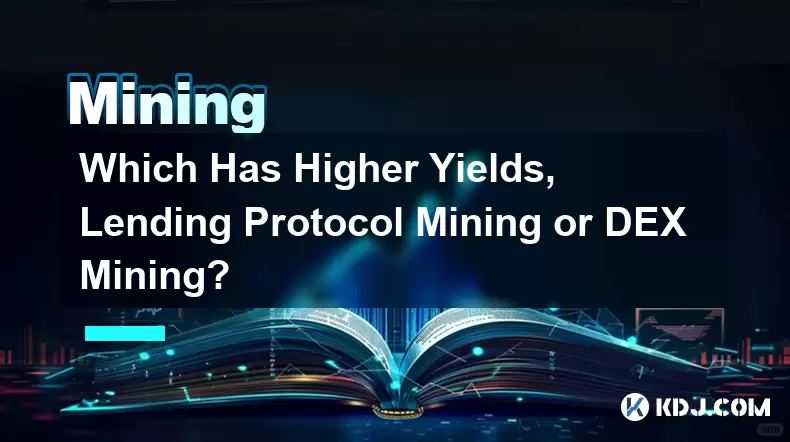
Understanding Lending Protocol Mining
Lending protocol mining refers to the process where users provide liquidity in the form of crypto assets to decentralized lending platforms, such as Aave or Compound. In return, they earn interest and governance tokens as rewards. The mechanism involves depositing funds into a pool, allowing borrowers to take out loans against these deposits. The yield is derived from two sources: interest paid by borrowers and token incentives distributed by the protocol.
One key aspect of lending protocol mining is capital efficiency. Users can sometimes stake their deposited tokens in additional reward programs, increasing their returns. However, risks include impermanent loss (though less pronounced than in DEXes), liquidation risk for undercollateralized positions, and smart contract vulnerabilities.
Exploring DEX Mining
DEX mining, commonly known as liquidity mining, occurs when users supply trading pairs to decentralized exchanges like Uniswap or SushiSwap. By doing so, they become liquidity providers (LPs) and earn a portion of the trading fees generated on the platform. Additionally, many DEXs offer incentive tokens to LPs, boosting the overall yield.
A notable feature of DEX mining is the potential for high APRs, especially during new token launches or farming campaigns. However, this comes with drawbacks such as impermanent loss, which affects returns when asset prices fluctuate significantly. Also, concentrated liquidity models like those used by Uniswap v3 require strategic positioning of assets within specific price ranges to optimize yield.
Comparative Yield Analysis
When comparing lending protocol mining vs DEX mining, yield depends on several factors including market conditions, token incentives, and the user's strategy. During bull markets, DEX mining often offers higher short-term yields due to generous token emissions. Conversely, lending protocols may provide more stable returns, especially when borrowing demand remains consistent.
For instance, if a user supplies ETH and USDC to a Uniswap pool, they might earn both swap fees and UNI rewards. Meanwhile, supplying the same assets to Aave would generate interest income and possibly AAVE token rewards. In volatile periods, DEX mining can be more lucrative but also riskier, while lending tends to offer steadier gains with lower exposure to price swings.
Risk-Return Trade-offs in Practice
Both strategies carry unique risks that affect net yield. Impermanent loss in DEX mining can erode profits, especially when one asset in the pair experiences significant volatility. Smart contract exploits are another concern, affecting both types of platforms but historically more prevalent in newer DeFi projects offering high-yield farming.
On the other hand, lending protocols face risks related to over-leveraged borrowers and collateral liquidations. If a borrower’s position gets liquidated during a sharp price drop, it can lead to bad debt or reduced returns for lenders. Therefore, users must assess not only the nominal yield but also the underlying risk-adjusted return before choosing between the two methods.
Operational Steps for Maximizing Returns
To effectively engage in either lending protocol mining or DEX mining, follow these detailed steps:
- Research current yield opportunities: Use platforms like DeFi Pulse or Dune Analytics to compare APRs across different protocols.
- Assess token incentives: Check how long the token rewards will last and whether they are vested or immediately transferable.
- Deposit assets strategically: For DEX mining, choose pools with low volatility or stablecoin pairs to minimize impermanent loss. For lending, prioritize assets with high borrowing demand.
- Monitor and rebalance regularly: Keep an eye on APY changes and reallocate funds to better-performing pools or protocols.
- Use multi-chain wallets: Many high-yield opportunities exist on alternative chains like Arbitrum or Optimism, requiring cross-chain compatibility.
- Enable auto-compounding if available: Some platforms offer auto-compounding features that reinvest rewards automatically, enhancing long-term gains.
By following these operational guidelines, users can optimize their earnings while managing associated risks.
Frequently Asked Questions
1. Can I participate in both DEX and lending protocol mining simultaneously?
Yes, users can allocate funds across multiple DeFi platforms. However, it’s crucial to monitor gas costs and manage risk exposure accordingly.
2. How do token emissions affect yield in each model?
Token emissions can significantly boost returns in both models, but they often come with high volatility and dumping risks post-rewards.
3. Is impermanent loss exclusive to DEX mining?
Yes, impermanent loss primarily affects liquidity providers in automated market makers, not lenders in fixed-rate or variable-interest models.
4. Do lending protocols offer governance rights through mining?
Many lending platforms distribute governance tokens alongside interest, giving users voting power proportional to their holdings.
Disclaimer:info@kdj.com
The information provided is not trading advice. kdj.com does not assume any responsibility for any investments made based on the information provided in this article. Cryptocurrencies are highly volatile and it is highly recommended that you invest with caution after thorough research!
If you believe that the content used on this website infringes your copyright, please contact us immediately (info@kdj.com) and we will delete it promptly.
- Charles Schwab, Bitcoin Trading, and Stablecoins: A New Era?
- 2025-07-19 11:30:13
- Meme Coin Mania: BONK, FLOKI, and the Quest for Crypto Gold
- 2025-07-19 10:50:12
- Troller Cat Presale Surge: The Meme Coin That's Actually Good?
- 2025-07-19 10:50:12
- Hedera (HBAR) Whale Activity: Riding the Bullish Wave?
- 2025-07-19 11:30:13
- XRP Mining for Passive Income: Is It the Next Big Thing?
- 2025-07-19 10:30:12
- XRP Mining for Passive Income: Is It the New Gold Rush?
- 2025-07-19 11:35:12
Related knowledge
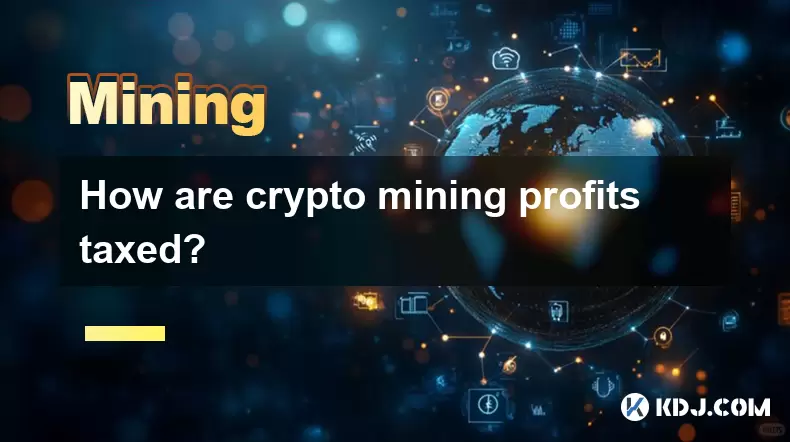
How are crypto mining profits taxed?
Jul 14,2025 at 12:28am
Understanding Cryptocurrency Mining and TaxationCryptocurrency mining involves validating transactions on a blockchain network and earning rewards in ...
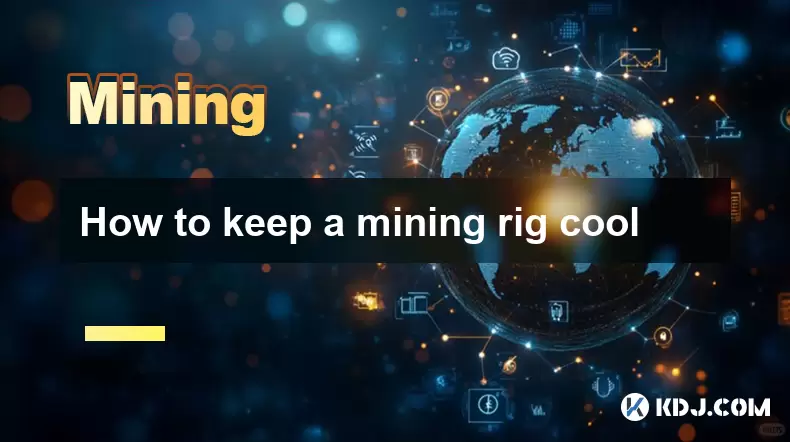
How to keep a mining rig cool
Jul 12,2025 at 01:42pm
Understanding the Importance of Cooling in Mining RigsCryptocurrency mining is an intensive process that places heavy demand on hardware components, p...
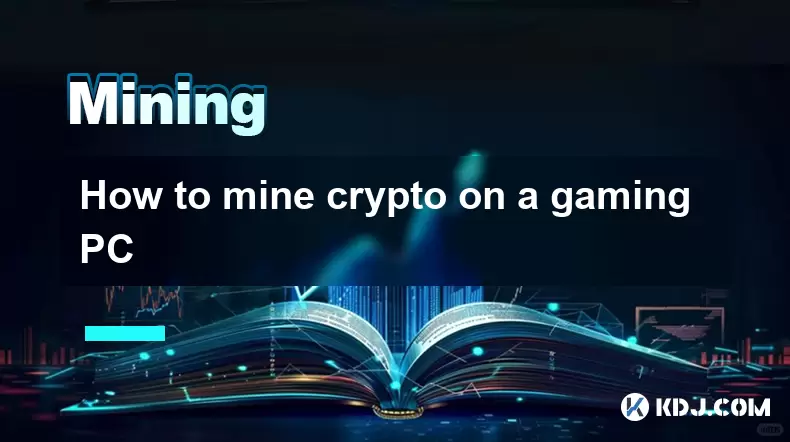
How to mine crypto on a gaming PC
Jul 16,2025 at 12:00pm
What is Crypto Mining on a Gaming PC?Crypto mining involves using your computer's processing power to validate transactions on a blockchain network. A...
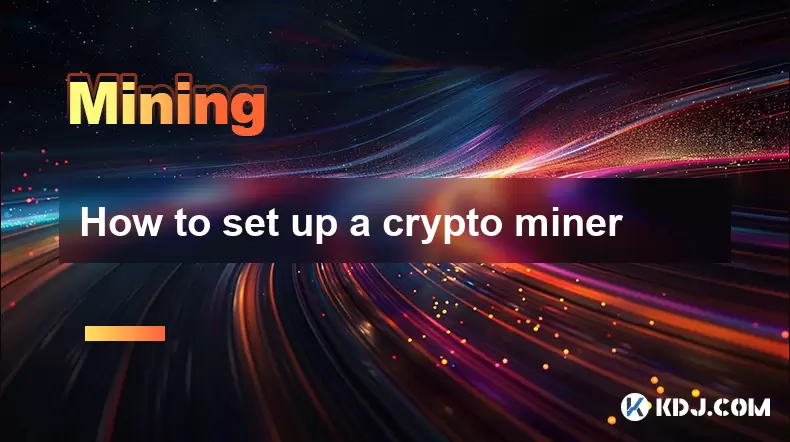
How to set up a crypto miner
Jul 16,2025 at 09:14am
Understanding Ethereum Gas Fees: What Are They and How Do They Work?Ethereum gas fees are a fundamental aspect of the network, representing the cost r...
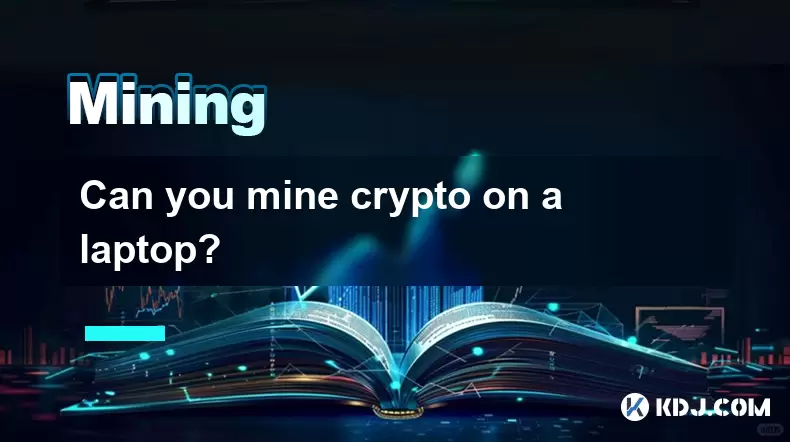
Can you mine crypto on a laptop?
Jul 16,2025 at 02:21am
Is It Feasible to Mine Cryptocurrency on a Laptop?Mining cryptocurrency on a laptop is technically possible, but feasibility depends heavily on the ha...
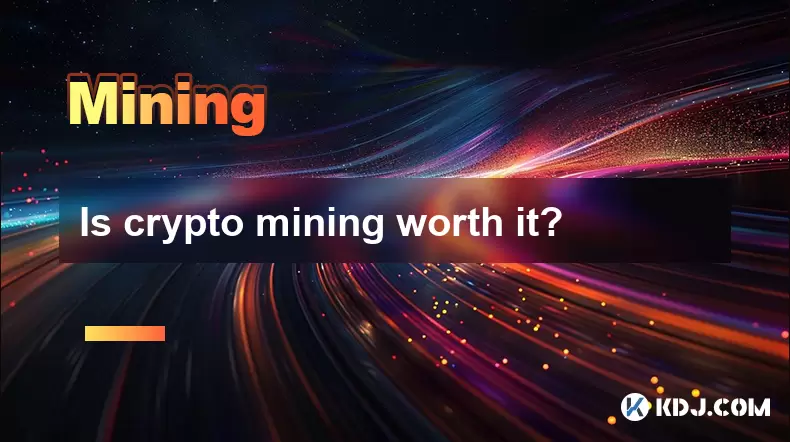
Is crypto mining worth it?
Jul 16,2025 at 01:21am
Understanding the Basics of Crypto MiningCrypto mining refers to the process of validating transactions on a blockchain network by solving complex mat...

How are crypto mining profits taxed?
Jul 14,2025 at 12:28am
Understanding Cryptocurrency Mining and TaxationCryptocurrency mining involves validating transactions on a blockchain network and earning rewards in ...

How to keep a mining rig cool
Jul 12,2025 at 01:42pm
Understanding the Importance of Cooling in Mining RigsCryptocurrency mining is an intensive process that places heavy demand on hardware components, p...

How to mine crypto on a gaming PC
Jul 16,2025 at 12:00pm
What is Crypto Mining on a Gaming PC?Crypto mining involves using your computer's processing power to validate transactions on a blockchain network. A...

How to set up a crypto miner
Jul 16,2025 at 09:14am
Understanding Ethereum Gas Fees: What Are They and How Do They Work?Ethereum gas fees are a fundamental aspect of the network, representing the cost r...

Can you mine crypto on a laptop?
Jul 16,2025 at 02:21am
Is It Feasible to Mine Cryptocurrency on a Laptop?Mining cryptocurrency on a laptop is technically possible, but feasibility depends heavily on the ha...

Is crypto mining worth it?
Jul 16,2025 at 01:21am
Understanding the Basics of Crypto MiningCrypto mining refers to the process of validating transactions on a blockchain network by solving complex mat...
See all articles

























































































